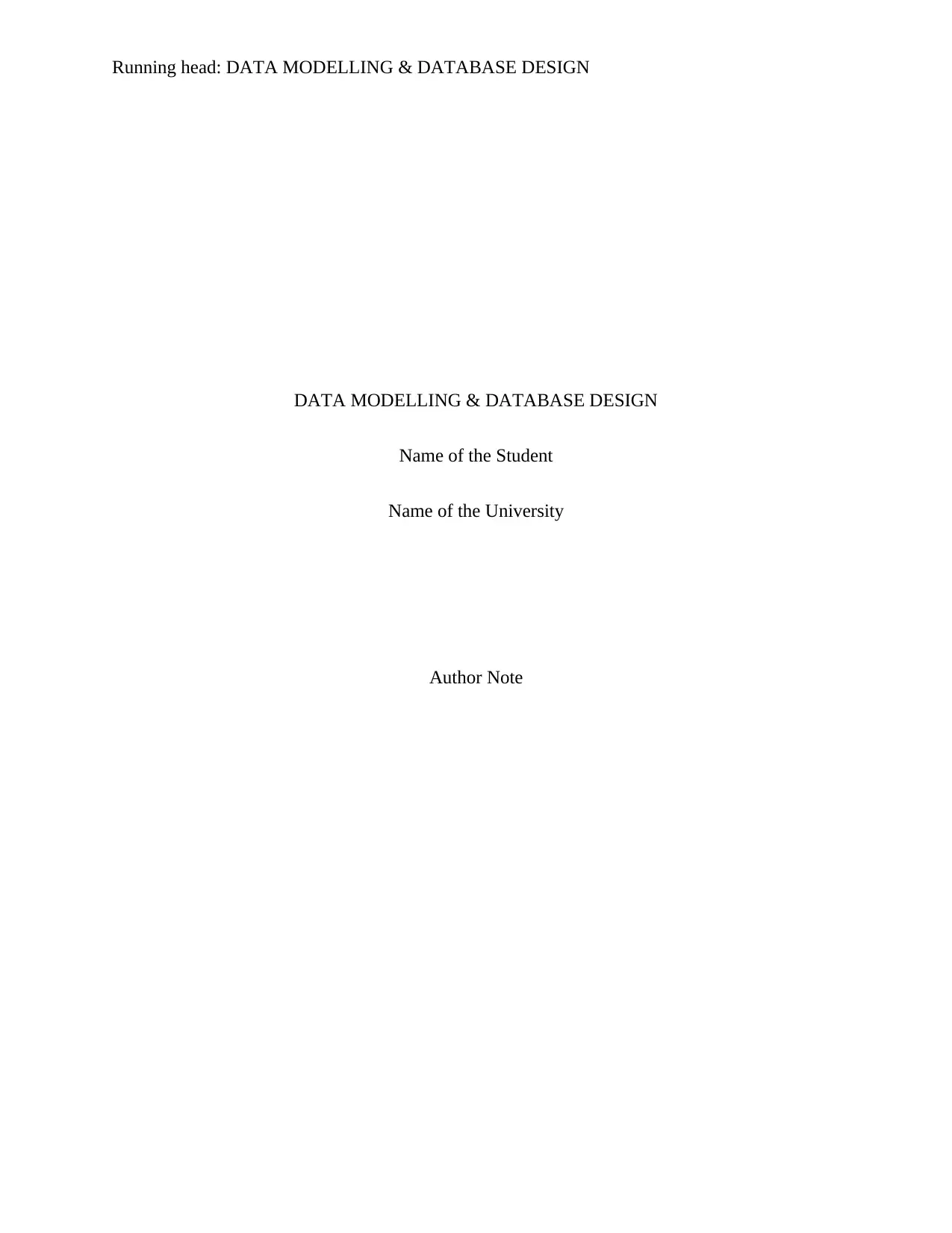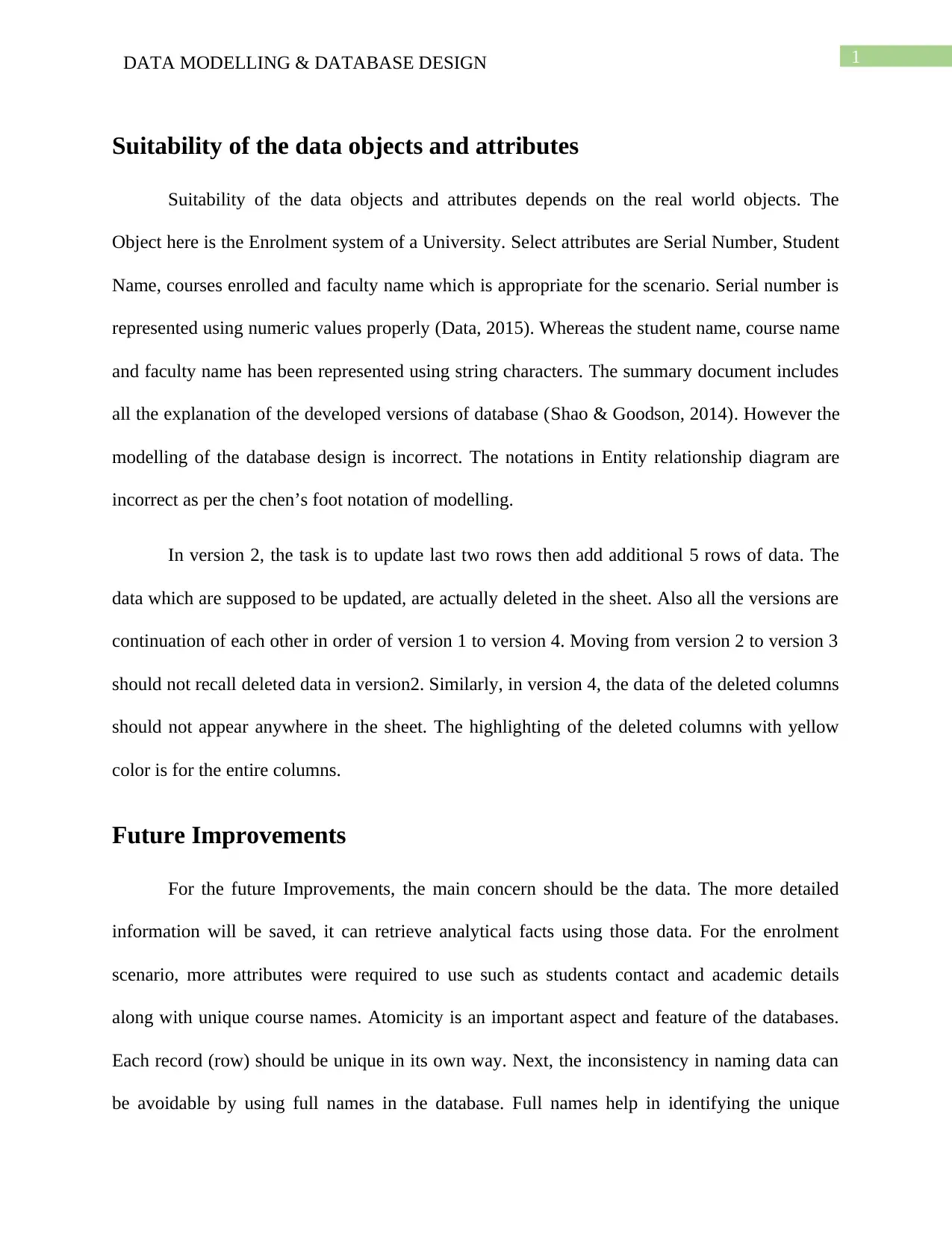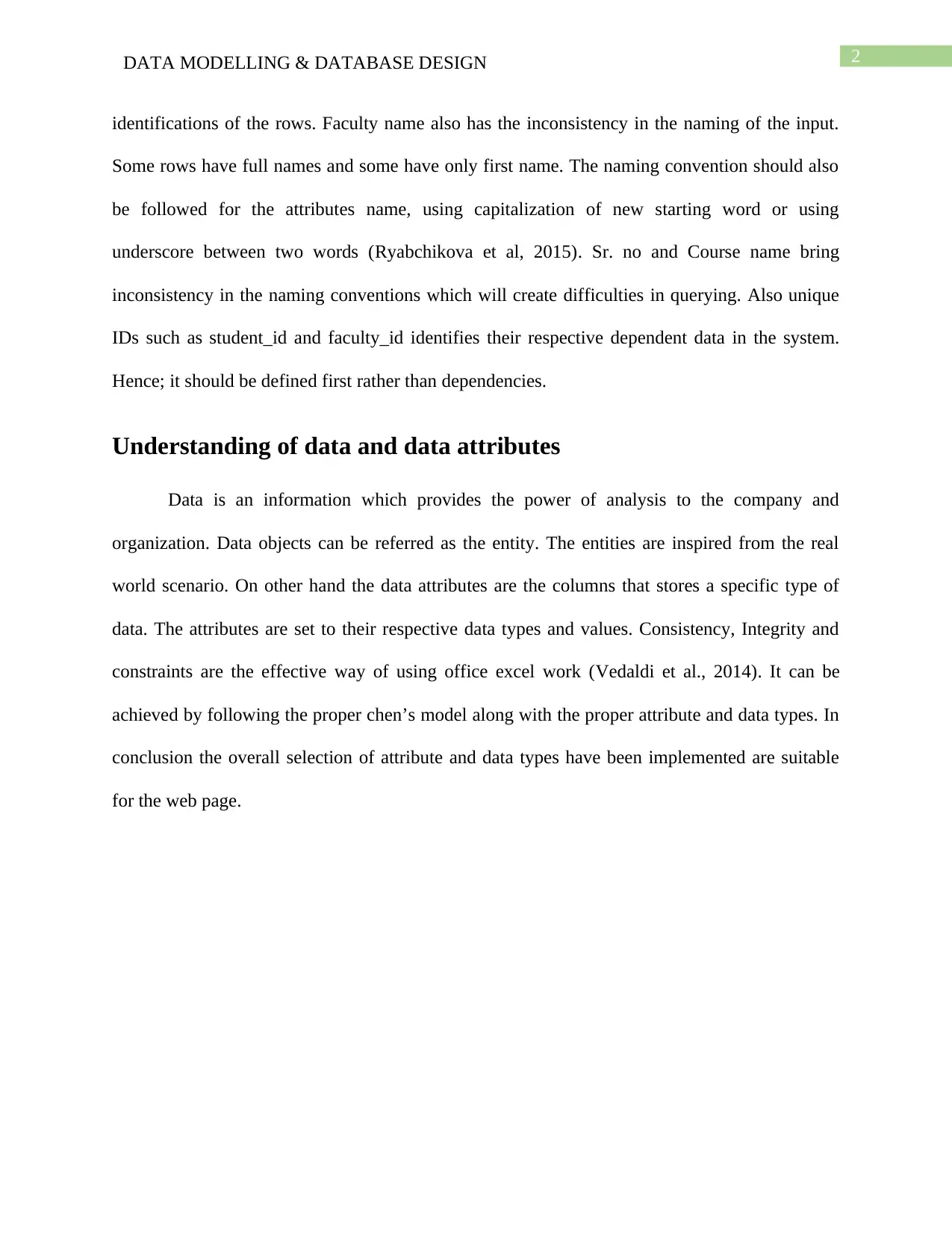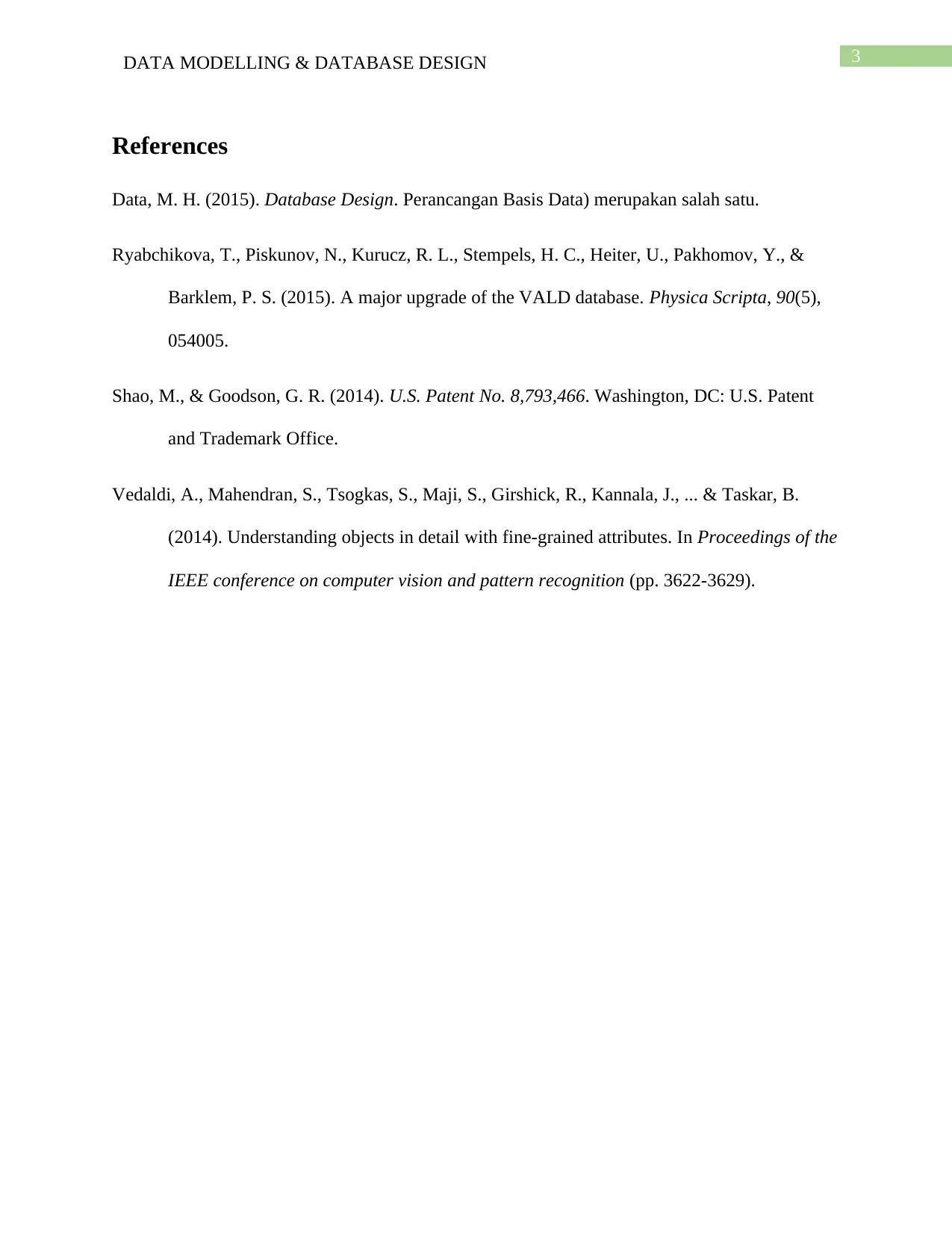MIS602: Data Modelling & Database Design Assessment 1 Report
VerifiedAdded on 2022/08/25
|4
|781
|20
Report
AI Summary
This report evaluates a student's data modelling and database design assignment for the MIS602 course, focusing on an enrollment system. The report assesses the suitability of data objects and attributes, highlighting issues with the Entity Relationship Diagram (ERD) notations and inconsistencies across different versions of the database design. It identifies errors such as data deletion instead of updates and inconsistencies in data naming conventions. The report suggests improvements, emphasizing the need for more detailed data, unique identifiers, and standardized naming conventions to ensure data integrity, atomicity, and consistency. The student also provides a brief overview of data, data attributes, and the importance of consistency, integrity, and constraints in database design, with references to relevant research papers.
1 out of 4











![[object Object]](/_next/static/media/star-bottom.7253800d.svg)